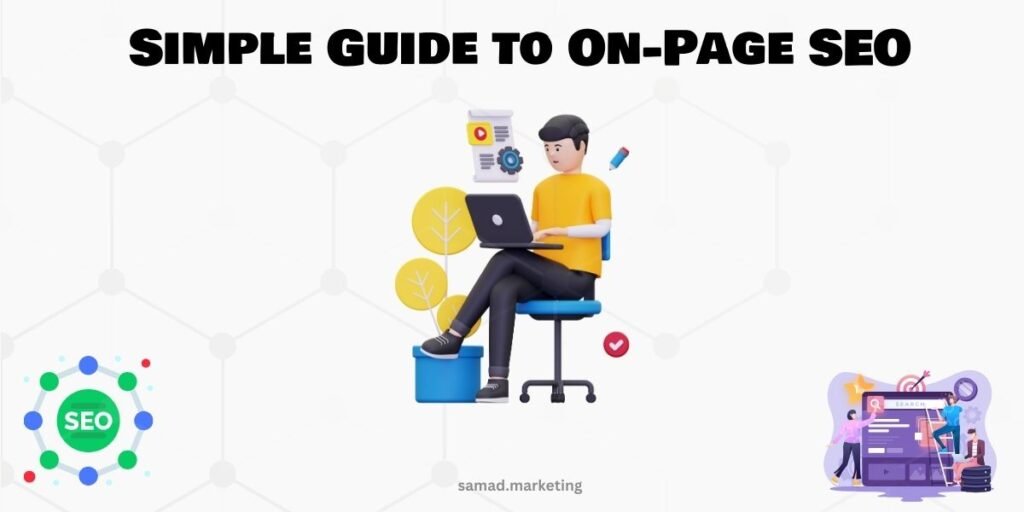Many people wonder how to do on-page SEO properly. Here’s a straightforward guide using the keyword “best laptop for nursing students” as an example. This will walk you through the steps of optimizing a page from start to finish.
Step 1: Pick a Keyword (and Understand the Topic)
Start by choosing a base keyword — this will guide the rest of your content. But remember, you’re not just targeting one keyword. You’re aiming to rank for a topic, which often includes multiple related keywords.
In our example, the keyword is “best laptop for nursing students”. The broader topic includes things like:
- Laptops for nursing school
- Best laptops for college nursing students
- Laptop requirements for nursing
So, we’re focusing on laptops made specifically for the needs of nursing students.
Step 2: Understand Search Intent
Before writing, you need to understand what people are really looking for. Check what’s already ranking on page 1 of Google.
In this case, people are looking for:
- A laptop that suits the specific needs of nursing students.
- Something portable, durable, and reliable for use in lectures, note-taking, and exams.
Make sure your article speaks directly to those needs.
Step 3: Analyze the Competition and Search Volume
Use tools like Ahrefs or SEMrush to:
- Check the monthly search volume of your main keyword.
- Look at what other keywords the top-ranking pages are getting traffic from.
- Identify long-tail keywords (search terms with 3+ words) related to your topic.
Even if your main keyword doesn’t have high volume, a group of smaller keywords can still bring good traffic when combined.
Step 4: Gather All Related Keywords
Once you’ve checked the top-ranking pages, note down all the closely related keywords. For example:
- Best laptop for nursing students
- Laptops for nursing school
- top laptops for nursing students
- Best computer for nursing students
- Nursing student laptop
All these are part of the same keyword group and should be naturally included in your content.
Step 5: Cover All Relevant Topics
Skim the top-ranking pages and take notes on the topics they cover. For this keyword, include:
- Battery life
- Portability
- Storage & RAM
- Weight and display size
- Use for taking notes and exams
- Online learning needs (like webcams)
- Comparisons between tablets and laptops
- Durability and productivity
This builds your article’s topical relevance, showing Google you cover the subject in full.
Step 6: Choose the Right Word Count
Check the average word count of top-performing articles. Exclude overly short or extremely long outliers.
If most pages have 3,500–4,600 words, aim for somewhere in that range. You don’t need the longest article — just be competitive.
Step 7: Use Keywords Properly (Not Densely)
Forget about keyword density. Google doesn’t look for exact percentages. Instead, focus on keyword usage. Use your main keyword:
- In the title (H1) and a few H2s
- 1–2 times in the intro/body
- A few times naturally throughout the article
Example phrases to sprinkle in:
- Best laptops for nursing students
- Nursing school laptops
- Laptops for college students
- Computers for nursing school
These reinforce the topic and make it clear to Google what your page is about.
Step 8: Write with Google and Humans in Mind
Google is just a machine. You need to make your article easy for it to understand, but also helpful and engaging for real people.
Here’s an example:
❌ “This product is ideal for those in this profession due to its various features.”
✅ “One of the best laptops for nursing students is the Asus XYZ. It has great battery life, which is perfect for students moving between lectures.”
Use your keywords clearly and in context. Repeat them naturally, not forcefully.
Step 9: Use SEO Tools to Refine Content
Use tools like Surfer SEO, Frase, or PageOptimizer Pro to:
- Compare your content with top results
- Identify missing keywords or phrases
- Match recommended word count, heading structure, and paragraph count
These tools help guide your optimization, but don’t follow them blindly. Use common sense.
Final Step: Write and Improve
Now that you’ve planned everything:
- Write the article based on your keyword/topic research
- Make sure to include all the subtopics
- Edit it to make it flow naturally
- Add keywords where they make sense
If you have a writer, you can hand over the brief. If you’re writing yourself, use the steps above as a checklist.
Final Thoughts
To rank on Google, your content needs to:
- Cover the topic thoroughly
- Use keywords smartly, not just frequently
- Be easy for both readers and search engines to understand
Don’t get stuck chasing keyword density or “perfect” content. Focus on clear structure, smart optimization, and user intent. That’s the real SEO strategy that works long-term.

